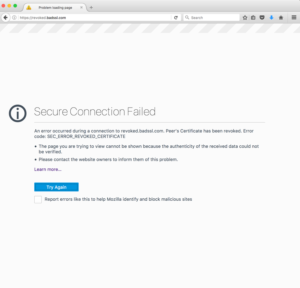
Protecting cryptographic keys is always a balancing act. For the keys to be useful they need to be readily accessible, recoverable and their use needs to be sufficiently performant so their use does not slow your application down. On the other hand, the more accessible and recoverable they are the less secure the keys are.
In Windows, we tried to build a number of systems to help with these problems, the most basic was the Window Data Protection API (DPAPI). It was our answer to the question: “What secret do I use to encrypt a secret”. It can be thought of as a policy or DRM system since as a practical matter it is largely a speed bump for privileged users who want access to the data it protects.

Over the years there have been many tools that leverage the user’s permissions to decrypt DPAPI protected data, one of the most recent was DPAPIPick. Even though I have framed this problem in the context of Windows, Here is a neat paper on this broad problem called “Playing hide and seek with stored keys”.
The next level of key protection offered by Windows is a policy mechanism called “non-exportable keys” this is primarily a consumer of DPAPI. Basically, when you generate the key you ask Windows to deny its export, as a result the key gets a flag set on it that can not, via the API, be changed. The key and this flag are then protected with DPAPI. Even though this is just a policy enforced with a DRM-like system it does serve its purpose, reducing the casual copying of keys.
Again over the years, there have been numerous tools that have leveraged the user’s permissions to access these keys, one of the more recent I remember was called Jailbreak (https://github.com/iSECPartners/jailbreak-Windows). There have also been a lot of wonderful walkthroughs of how these systems work, for example, this nice NCC Group presentation.
The problem with all of the above mechanisms is that they are largely designed to protect keys from their rightful user. In other words, even when these systems work they key usually ends up being loaded into memory in the clear where it is accessible to the user and their applications. This is important to understand since the large majority of applications that use cryptography in Windows do so in the context of the user.
A better solution to protecting keys from the user is putting them behind protocol specific APIs that “remote” the operation to a process in another user space. We would call this process isolation and the best example of this in Windows is SCHANNEL.
SCHANNEL is the TLS implementation in Windows, prior to Windows 2003 the keys used by SCHANNEL were loaded into the memory of the application calling it. In 2003 we moved the cryptographic operations into Local Security Authority Subsystem Service (LSAS) which is essentially RING 0 in Windows.
By moving the keys to this process we help protect, but don’t prevent, them from user mode processes but still enable applications to do TLS sessions. This comes at an expense, you now need to marshal data to and from user mode and LSAS which hurts performance.
[Nasko, a former SCHANNEL developer tells me he believes it was the syncronous nature of SSPI that hurt the perf the most, this is likely, but the net result is the same]
In fact, this change was cited as one of the major reasons IIS was so much slower than Apache for “real workloads” in Windows Server 2003. It is worth noting those of us involved in the decision to make this change surely felt vindicated when Heartbleed occurred.
This solution is not perfect either, again if you are in Ring 0 you can still access the cryptographic keys.
When you want to address this risk you would then remote the cryptographic operation to a dedicated system managed by a set of users that do not include the user. This could be TCP/IP remoted cryptographic service (like Microsoft KeyVault, or Google Cloud Key Manager) or maybe a Hardware Security Module (HSM) or smart card. This has all of the performance problems of basic process isolation but worse because the transition from the user mode to the protected service is even “further” or “bandwidth” constrained (smart cards often run at 115k BPS or slower).
In Windows, for TLS, this is accomplished through providers to CNG, CryptoAPI CSPs, and Smartcard minidrivers. These solutions are usually closed source and some of the security issues I have seen in them over the years are appalling but despite their failings, there is a lot of value in getting keys out of the user space and this is the most effective way of doing that.
These devices also provide, to varying degrees, protection from physical, timing and other more advanced attacks.
Well, that is my summary of the core key protection schemes available in Windows. Most operating systems have similar mechanisms, Windows just has superior documentation and has answers to each of these problems in “one logical place” vs from many different libraries from different authors.
Ryan










